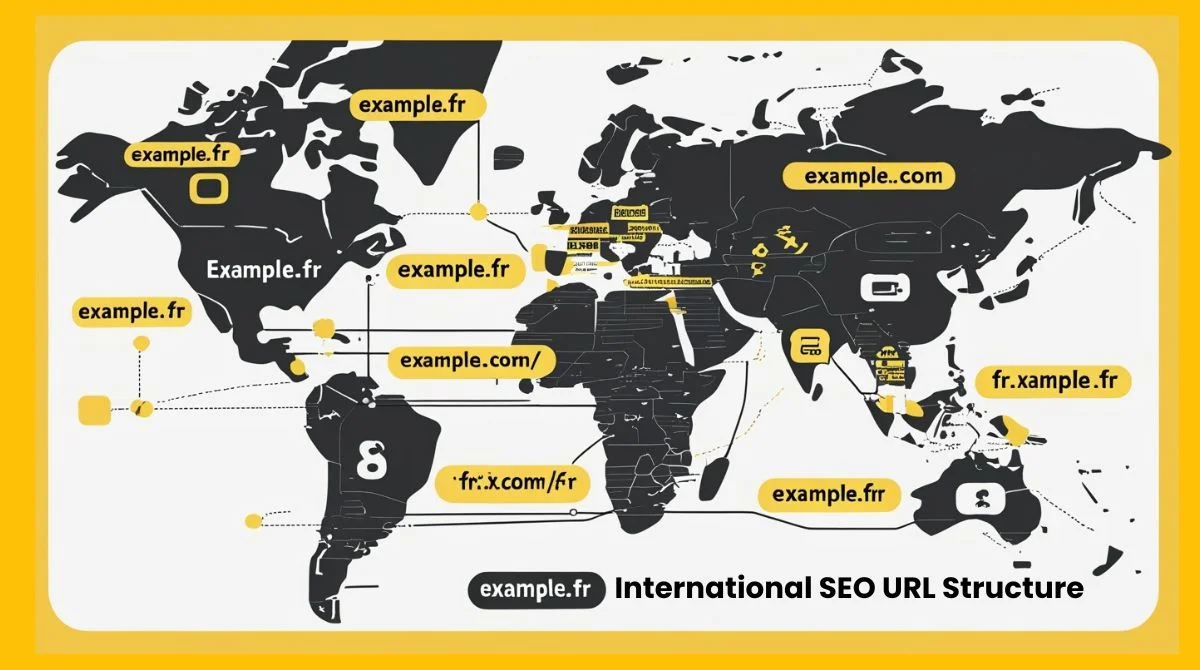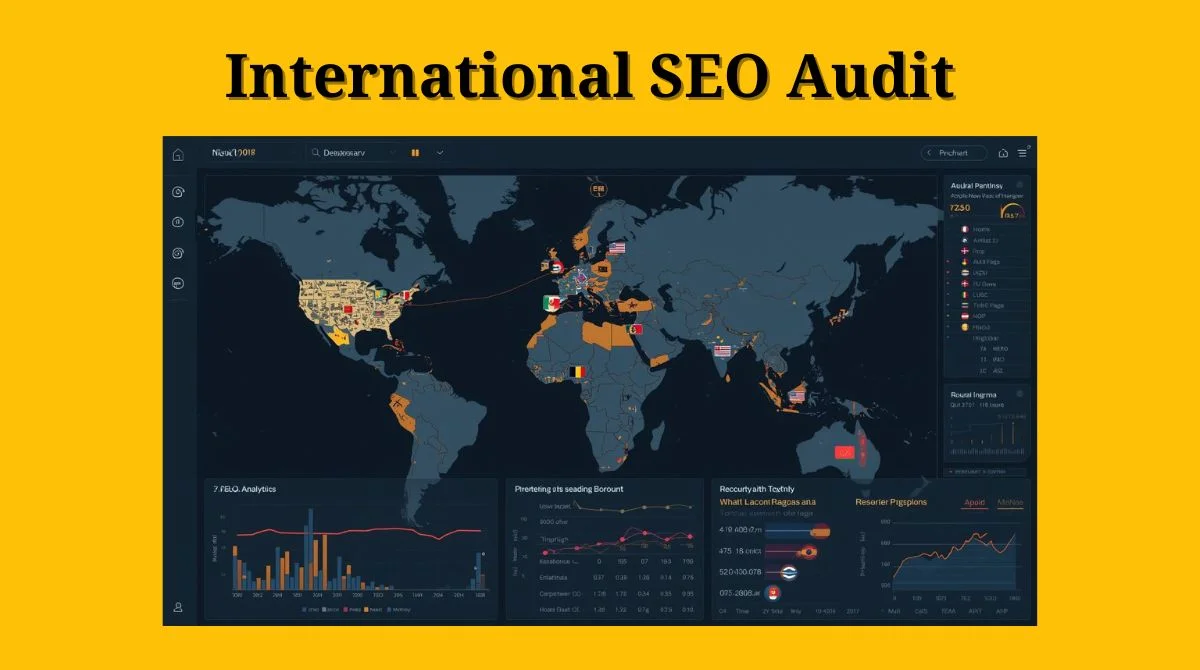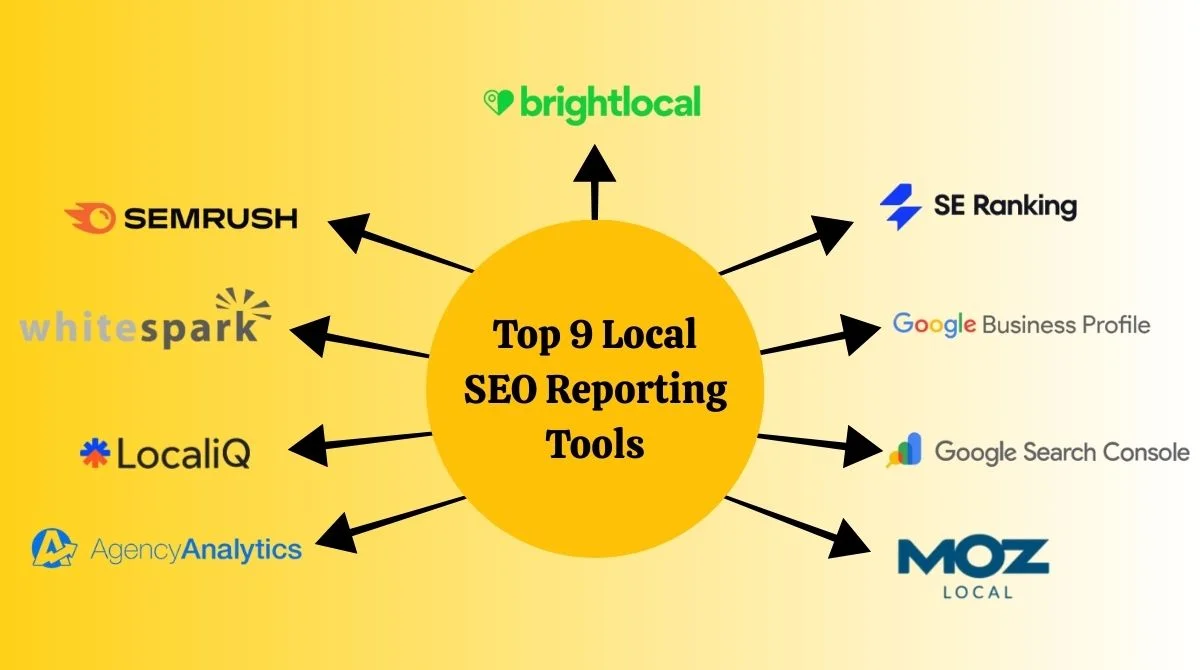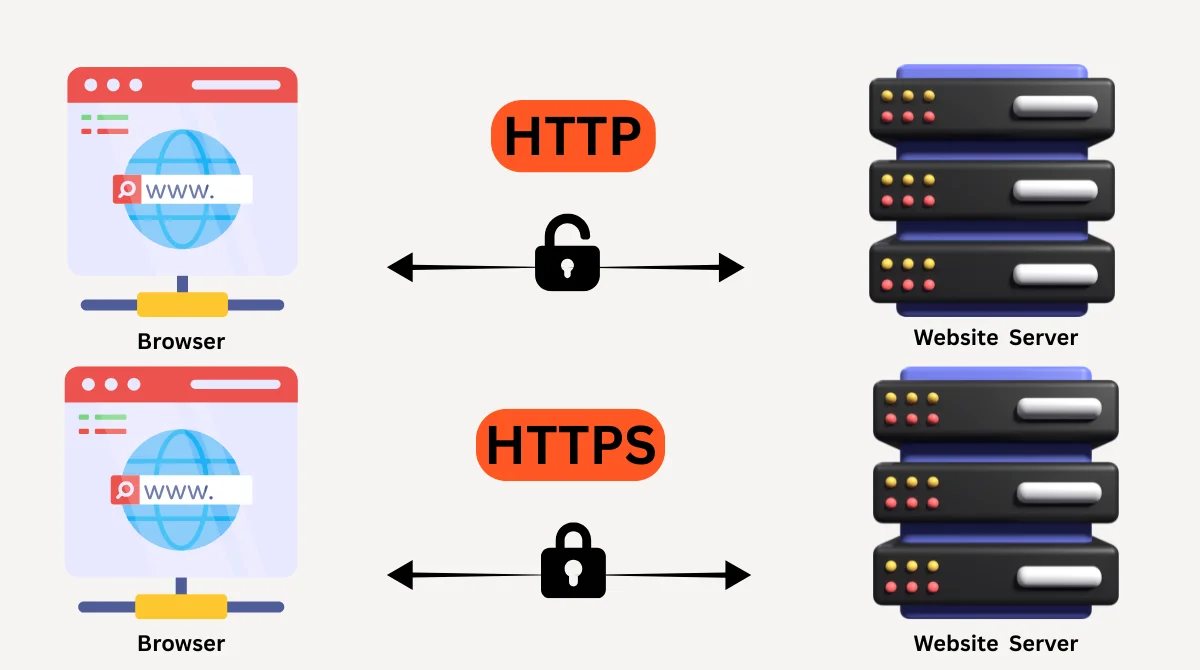In this era of digital growth, content is the driving force behind online success. Businesses, creators, and marketers rely on content to connect with their audience, build trust, and grow their brand. But creating content randomly is not enough. To see real results, you need a clear and effective content management strategy.
A content management strategy is a plan that helps you create, organize, publish, and track content in a way that meets your goals. Whether you run a blog, an e-commerce website, or a brand on social media, this strategy ensures that every piece of content serves a purpose.
What is a Content Management Strategy?
A content management strategy is a structured approach that guides how you plan, create, manage, and distribute content across platforms. Instead of posting randomly, it helps you create content with a goal in mind, whether it’s driving traffic, increasing sales, or building relationships with your audience.
Think of it as a roadmap that ensures your content is consistent, relevant, and aligned with your brand values.
Why Do You Need a Content Management Strategy?
Many people publish content without a proper plan. As a result, they struggle to reach the right audience or achieve their goals. A content management strategy addresses this issue by providing clear direction.
Here are some key reasons why you need it:
- Consistency: Ensures you post regularly and maintain a brand voice.
- Improved SEO: Boosts your content’s visibility and helps it rank higher in search results.
- Audience Engagement: Provides value and builds trust with readers.
- Efficiency: Saves time and avoids content duplication.
- Performance Tracking: Allows you to measure what works and what doesn’t.
Without a strategy, you risk wasting time, effort, and resources.
Steps to Create a Content Management Strategy
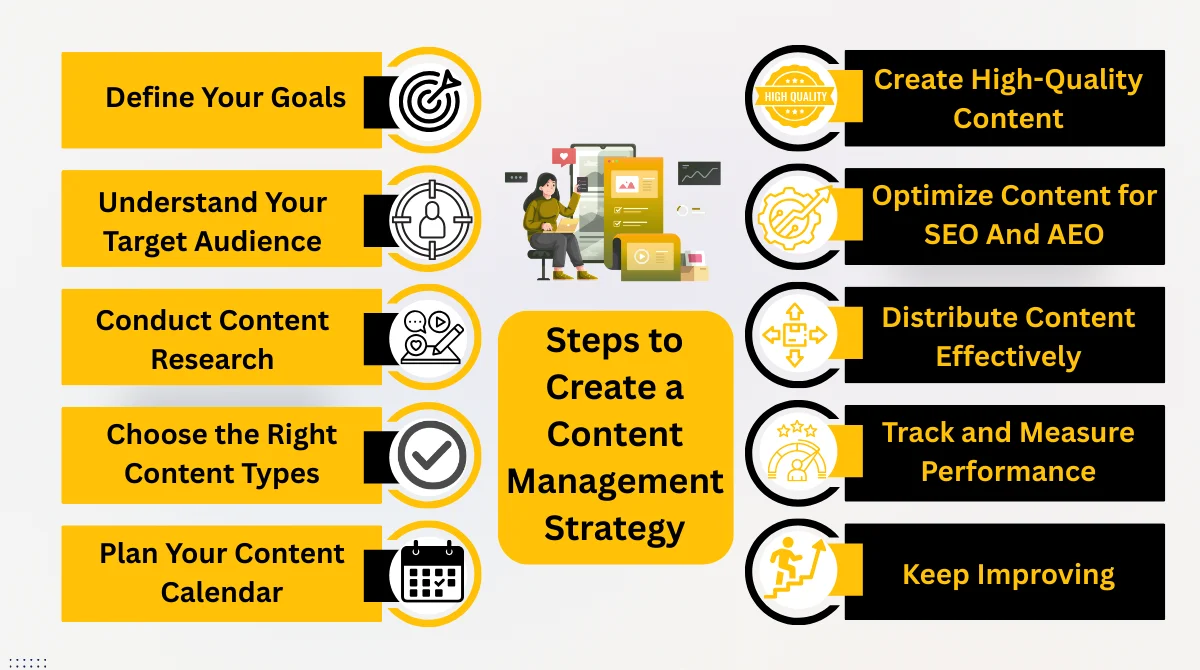
Now, let’s go step by step to understand how you can create a powerful and practical content management strategy.
1. Define Your Goals
Every effective content strategy starts with clear goals. If you don’t know why you are creating content, you won’t be able to measure its success. Begin by asking: What goals do I want my content to accomplish?
Your goals might include driving more traffic to your website, improving your SEO rankings, building authority in your industry, increasing sales or leads, or growing your social media presence. Each of these goals requires a slightly different approach. For example, if your goal is brand authority, you might focus on publishing detailed, expert-level guides, whereas if your goal is sales, you’ll focus more on product pages and persuasive content.
Having clear goals ensures that every piece of content you create has a purpose and can be measured against performance metrics later.
2. Understand Your Target Audience
Content is only successful when it reaches the right people and solves their problems. This is where understanding your target audience becomes crucial.
To do this, create buyer personas, fictional profiles of your ideal customers. A buyer persona usually includes information such as age, gender, job role, location, pain points, challenges, interests, and online behavior. For instance, if your target audience is young entrepreneurs, your content style and topics will be very different from content aimed at corporate professionals.
The better you understand your audience, the more personalized and engaging your content will be. When your readers feel like your content is speaking directly to them, they are more likely to trust your brand and take action.
3. Conduct Content Research
Before producing new content, you need to know what’s already out there and what your audience is searching for. This step ensures your content is relevant, valuable, and competitive.
There are three key parts to content research:
1. Competitor Analysis
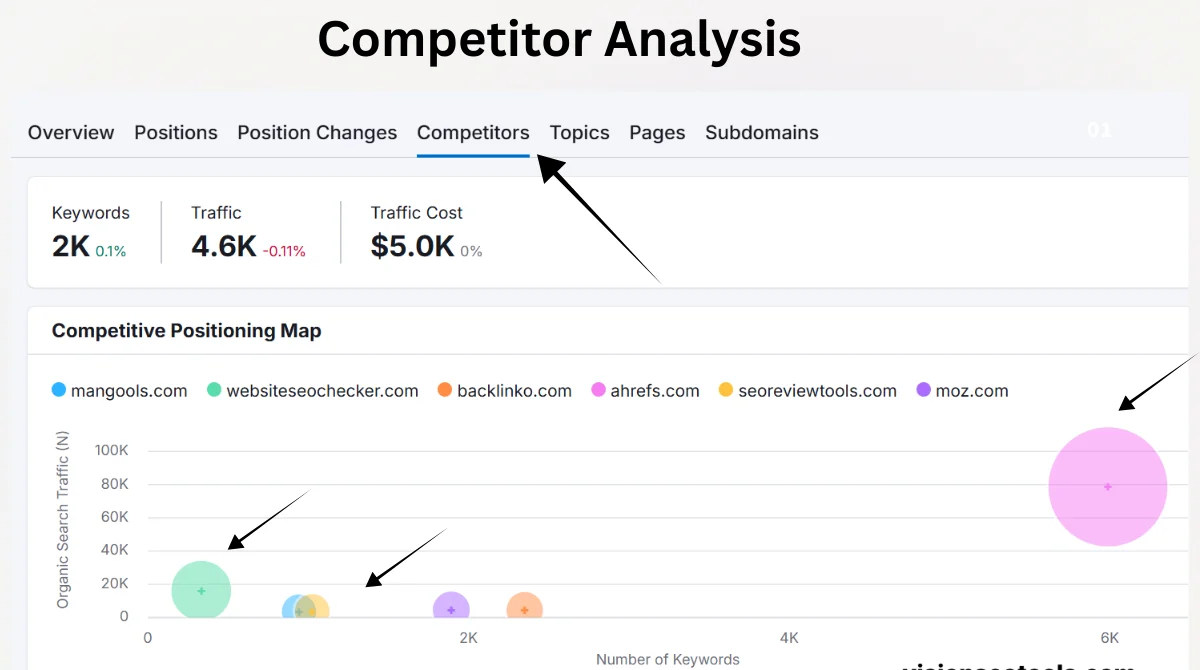
Review the type of content your competitors are sharing. Which of their posts perform well? What topics get the most engagement? This will give you insights into what works in your industry.
2. Keyword Research
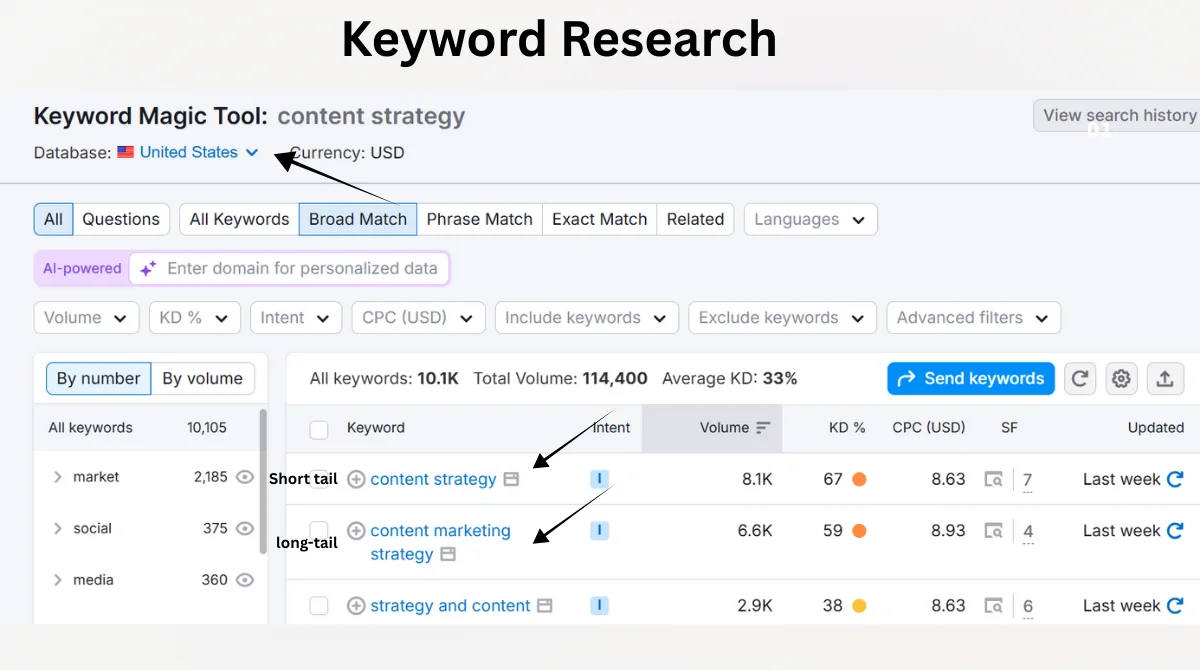
Use tools like SEMrush’s Keyword Magic Tool to discover relevant keywords. Focus on both short-tail keywords, such as content strategy, and long-tail variations like content marketing strategy to cover broader and more specific search intents.
3. Trend Analysis
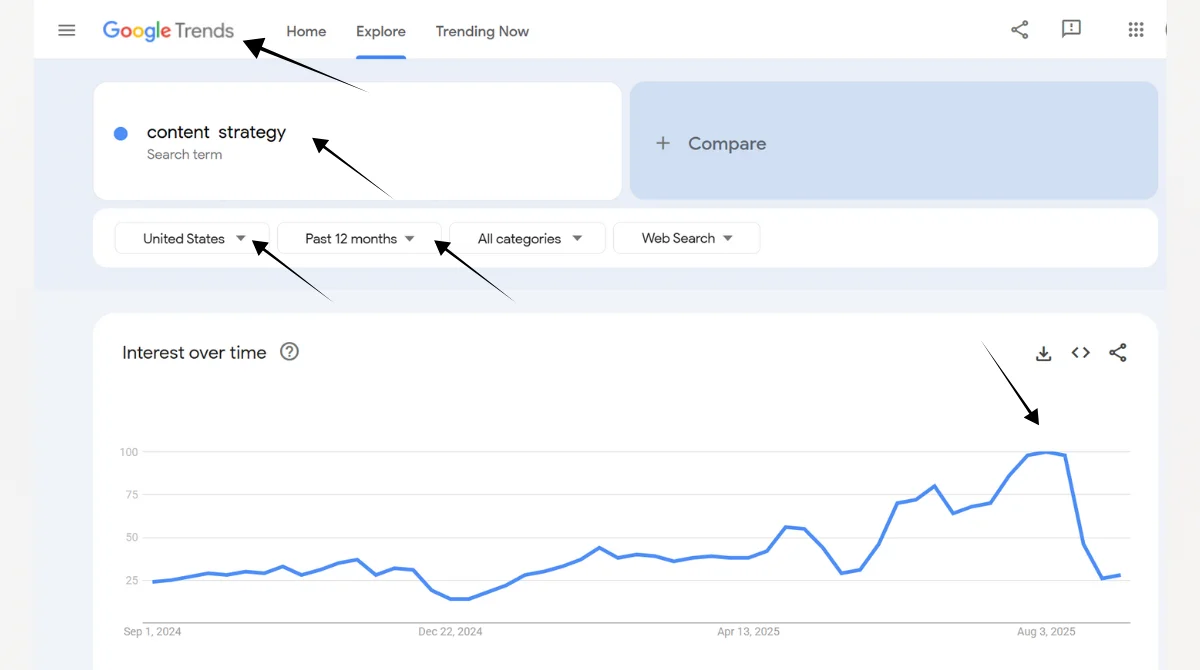
Search interest in content strategy has seen steady growth over the past year, with notable peaks, showing how the topic continues to gain attention. By keeping an eye on these trends and creating content around rising interest, you can boost visibility, attract more traffic, and stay ahead of competitors.
With this research, you’ll have a clear idea of gaps you can fill and opportunities you can capitalize on.
4. Choose the Right Content Types
Different audiences prefer different types of content, so it’s important to choose the right formats for your goals.
Here are some options:
- Blog posts: Best for SEO and educating your audience.
- Videos: Great for engagement on platforms like YouTube, Instagram, and TikTok.
- Infographics: Useful for presenting complex data in an easy-to-understand way.
- Podcasts: Ideal for building personal connections with audiences on the go.
- Case studies and whitepapers: Perfect for B2B businesses and authority building.
You don’t have to produce every type of content right away. Start with one or two formats that suit your audience best and then expand.
5. Plan Your Content Calendar
A content calendar is your roadmap. It helps you stay organized, publish consistently, and avoid last-minute stress.
Your calendar should include content topics, publishing dates, target keywords, format (blog, video, etc.), and the team member responsible for each task. For example, if you’re running a blog, you might plan to publish two posts per week, one focused on SEO keywords and another on trending industry topics.
A well-structured calendar makes your content production smoother and ensures your audience always has something new to engage with.
6. Create High-Quality Content
Once you’ve planned, it’s time to create. The success of your strategy depends on the quality of your content. High-quality content attracts readers, builds trust, and gets shared.
To achieve this:
- Write in a simple and clear style so it’s easy to understand.
- Provide real value by solving problems or answering questions.
- Use storytelling to keep readers engaged.
- Add visuals like images, infographics, and videos to make content more appealing.
- Always optimize for SEO by including keywords, headings, and meta descriptions.
Remember: quality is more important than quantity. Even one detailed, well-researched article can generate more results than multiple weak posts.
7. Optimize Content for SEO and Answer Engines
Search engines are still the biggest traffic source, but today, AI-based answer engines (like ChatGPT, Perplexity, or voice search assistants) are also important. To optimize for both:
- Use natural, conversational language in your writing.
- Answer specific questions directly within your content.
- Structure your content with headings and subheadings (H2, H3).
- Add an FAQ section with clear, short answers.
- Enhance your meta titles and descriptions by incorporating target keywords.
By doing this, your content will rank higher on Google and also appear in featured snippets and AI answers, giving you an edge over competitors.
8. Distribute Content Effectively
Publishing your content is only the first step; distribution is what brings it to life. Even the best content won’t work if nobody sees it.
Some effective channels for content distribution include:
- Social media platforms like Facebook, Instagram, LinkedIn, or X (Twitter).
- Email newsletters for direct audience communication.
- Guest posts on other websites to reach new audiences.
- Collaborations with influencers in your niche.
- Paid promotions such as Google Ads or social media ads.
An effective distribution strategy makes sure your content reaches the people who matter most to your business.
9. Track and Measure Performance

You can’t improve what you don’t measure. Tracking your content’s performance tells you whether your strategy is working or not.
Some key metrics to monitor are:
- Website traffic: Are people visiting your site?
- Engagement Rate: Check whether your audience is liking, sharing, or commenting.
- Bounce rate: Are visitors leaving quickly or staying to read more?
- Conversion rate: Are visitors turning into leads, sign-ups, or customers?
- Keyword Rankings: Measure whether your SEO strategies are delivering results.
Tools like Google Analytics, Google Search Console, and social media insights make it easy to track these numbers.
10. Keep Improving
A content management strategy isn’t a one-time task you set up and leave behind. The digital world is constantly changing new trends, new competitors, and evolving customer behavior.
That’s why you should review your strategy every few months. Look at your data, check what’s working, and improve what’s not. For example, if blog posts are performing better than videos, you might decide to focus more on written content. Or if a certain topic drives more leads, you can expand on it with related content.
The goal is continuous improvement. The more you refine your strategy, the better results you’ll achieve.
Common Mistakes to Avoid
While building a strategy, try to avoid these common mistakes:
- Creating content without audience research.
- Publishing irregularly.
- Ignoring SEO basics.
- Copying competitors instead of being unique.
- Focusing only on quantity over quality.
Avoiding these mistakes will save time and help you achieve better results.
Final Thoughts
Creating a content management strategy may seem complex, but with clear goals, audience insights, quality content, SEO, and performance tracking, it becomes simple and effective. It’s not just about publishing, it’s about building lasting relationships and growing your brand. Start small, stay consistent, and keep improving, and your strategy will soon become the foundation of digital success.


